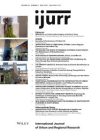This article argues that standardized, public or private infrastructure monopolies are receding as hegemonic forms of urban infrastructure development. We are starting to witness the uneven overlaying of new, customized, high‐performance urban infrastructures onto the apparently immanent, universal and (usually) public monopoly networks laid down in developed cities between the 1930s and 1960s. This article seeks to develop a broad and international exploration of the construction of such premium networked spaces and to begin analysing how they are bound up within wider processes of urban change and restructuring. To this end it highlights four processes of socio‐technical and political economic change that are supporting the emergence of premium networked infrastructures. These are: the ‘unbundling’ of urban infrastructure provision; the erosion of comprehensive urban planning and the construction of new consumption spaces; the emergence of infrastructural consumerism; and the widespread shift towards extended and automobilized cityscapes. In each case, the article explores emerging examples of premium networked spaces via brief case studies. Finally, the article reflects on the likely limits to these trends, by way of a brief conclusion.
Details
Written by:
Stephen Graham
Digital Object Identifier (DOI)
10.1111/1468-2427.00242
About DOI
Read full article as PDF
Read full article as HTML
See the references for this article
